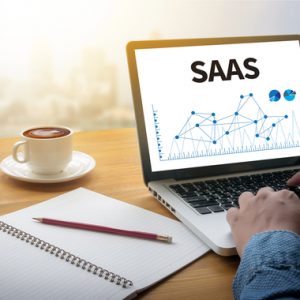What is Software as a Service (SaaS)? | Parallels Answers
What is Software as a Service? Software as a Service (SaaS) is a popular type of cloud computing software available over the Internet with a subscription-based pricing model. It is also known as web-based software, hosted software, or on-demand software. The SaaS model eliminates the need for businesses to install or manage the software at an office location. While the application is hosted at a central location, businesses can easily access that software via the Internet using any device, anytime and from any location. Facebook, Gmail, Twitter, YouTube, and Yahoo are some popular examples of SaaS-based applications widely used by people today.
What is Software as a Service? The State of The Market
The SaaS industry has seen significant and steady growth over the last two decades. From simply being an emerging technology in the early 2000’s, SaaS is now considered an ubiquity, powering many of today’s business processes for both large and small enterprises. Gartner predicts that end user spending on SaaS services will reach over $170 billion by the end of 2022, comprising about 35% of the total $482 billion forecasted spending on public cloud services.
The market also saw unprecedented success at the height of the COVID19 pandemic with the strong demand for remote work solutions, and revenue for SaaS’ businesses grew by 78% on average in 2020. While the rise has come to a slowdown in the face of the new normal, the potential for SaaS growth is still strong as many companies continue to migrate legacy software solutions to a SaaS consumption model.
Why SaaS?
 There’s a reason why SaaS is one of the most popular forms of cloud computing and currently a multibillion dollar market. One of its biggest draws is that it allows businesses to gain considerable savings on upfront investments and have them continue operating on predictable monthly costs.
There’s a reason why SaaS is one of the most popular forms of cloud computing and currently a multibillion dollar market. One of its biggest draws is that it allows businesses to gain considerable savings on upfront investments and have them continue operating on predictable monthly costs.
With a good understanding of what is software as a service, enterprises can quickly deploy solutions to employees and end users without having to install and run applications on in-house servers. Aside from the benefit of easier cost management, SaaS also simplifies setup of applications, offers scalability and accessibility, allows data portability, and eliminates the burden of software maintenance as all updating and patching are handled by the cloud service provider.
Given these advantages (which are discussed in more detail below), it’s no wonder that more enterprises are leveraging the capabilities of SaaS to achieve higher productivity and better efficiency across all users and processes in the company.
What is Software as a Service: Understanding Architecture and Pricing
Most Software as a Service offerings are based on multi-tenant architecture. This means a single version of the application is run on a single configuration and then published to multiple remote devices. Upgrade and maintenance of the software is also handled by the cloud provider.
SaaS products fall into two categories. Vertical SaaS provides software to a specific vertical such as manufacturing, education, or healthcare. Horizontal Saas caters to a specific department such as marketing or accounting regardless of the vertical. SaaS solutions are mostly subscription-based—monthly or annual, and thus, upfront costs are minimal. Customers only pay for the usage per event, transaction, or number of users.
In a traditional software environment, organizations have to purchase the software with a perpetual license and install it on every machine. This translates to substantial upfront costs. In addition, each time an update is released, IT administrators have to update every machine.
When the network hosts numerous devices with multiple operating systems, it becomes a tough challenge to manage the network. Plus, long-term planning and commitment of resources is needed for scaling. SaaS, combined with application delivery, provides an easy way to overcome all these challenges.
With SaaS, Independent Service Vendors (ISVs) have an opportunity to make applications available to multiple devices and platforms. In previous setups, this would have meant coding the application natively for each device or developing responsive web apps. SaaS and application delivery simplify this by publishing Windows applications across multiple devices. As there is only one instance, IT management is simplified while revenues are increased.
Software as a Service Use Case Scenarios
Given the current reliance on technology and digital products, it’s not surprising to see a wide range of SaaS applications for just about every organization, business user, and general consumer.
Among the oldest and most utilized forms of SaaS are cloud-based email services. Google’s Gmail, Microsoft’s Outlook and other email apps have been used by individuals for daily work and communication over the last two decades.
For enterprise use, email service is usually part of a line of productivity apps that include cloud storage, word processors, spreadsheets, and presentation tools, as well as chat and meeting apps—all designed to help business and employees communicate effectively and work collaboratively. Google’s GSuite (Drive, Docs, Sheets,GMeet, etc.) and Microsoft’s Office365 (Word, Excel, Powerpoint, Skype, etc.) are among the top providers of these services.
A Customer Relationship Management (CRM) application is another common business use case for SaaS. This type of software is most utilized in B2C companies where it is essential to collect, store, monitor, and analyze customer data that can then help them plan their marketing, sales and customer relationship strategies. Salesforce, Pipedrive, Hubspot, and Zoho are among the popular CRMs today.
There are also other use cases for SaaS that have gained some serious traction with businesses, and especially as they had to deal with remote work challenges. For instance, communication software such as Zoom and Slack have seen a sharp rise in usage, as have project management apps like Trello and Asana. Meanwhile, HR SaaS solutions like BullHorn and PeopleHR as well as accounting/billing software such as Quickbooks are also commonly used in many companies worldwide.
Moving from On-premises to Software as a Service
While SaaS is a good option for organizations and ISVs, there are certain challenges businesses face when transitioning to the cloud. For instance, when independent developers or ISVs want to transform their on-premises application into a Software as a Service offering, they have to refactor or rewrite it for mobile and cloud users.
When millions of lines of code are involved, it becomes an expensive and time-consuming procedure. Moreover, the entire business approach has to be transformed. You have to make it a multi-tenant product and track and manage the usage as well. The complexity and costs involved in this process need to be considered.
What is Software as a Service: Advantages
There are several benefits to using cloud-based or SaaS software for a business’ IT needs. Among the biggest advantages are:
- Scalable Usage. SaaS applications are not dependent on the enterprise’s capability to put up additional servers and other on-premise infrastructure. Instead, the software or service provider can provide additional access to the application as needed, scaling up or down according to the number of users, the volume of data, or whatever type of usage is required.
- Customization. While most off-the-shelf SaaS solutions are utilized as is, many can be customized to address the specific needs of the enterprise. SaaS customization also allows businesses to personalize their retail customers’ app experience, potentially influencing their buying decisions and boosting sales.
- Flexible Payments. SaaS apps are generally offered as subscription packages that are often billed on a per-user basis. Depending on the type of cloud service, fees may also be based on features and/or storage capacity. In any case, costs are usually charged monthly, thus doing away with steep upfront costs.
- Accessibility and Persistence. Cloud solutions are delivered over the internet, allowing users to access the app from just about any (web-enabled) device from practically anywhere and at any time. This capability takes the work-from-anywhere approach to a whole new level.
- Automatic Updates. Any need for software updates and/or security patching is handled by the service provider, taking that burden away from the in-house IT staff and eliminating software maintenance costs.
Make a Smooth Transition to the SaaS Cloud with Parallels RAS
Parallels Remote Application Server (RAS) is a comprehensive application delivery solution that enables businesses to deliver line-of-business Windows applications to employees or customers as SaaS on any device. With this solution, you don’t have to refactor or rewrite your software; any application can be virtualized and published to any device easily. Parallels RAS is easy to deploy and use while remaining significantly cost-effective. Any Windows application can be transformed into a web application with just a few clicks.
With this solution, you don’t have to refactor or rewrite your software; any application can be virtualized and published to any device easily. Parallels RAS offers simple, easy VDI and application delivery, while remaining significantly cost-effective. Any Windows application can be transformed into a web application with just a few clicks.
To help you make a smooth transition to the cloud, Parallels offers the Parallels Independent Software Vendor program that guides you through the process. Parallels team of experts works closely with you to help you build the best server and network architecture. From building and maintaining server infrastructure to working with various support and operations teams, the ISV program guides you in every aspect. You can instantly take any application mobile without interrupting the software development cycle. By moving to a Software as a Service model that has low entry costs, ISVs can attract new customers and build recurring revenue streams. Because Parallels Remote Application Server (RAS) is significantly cost-effective, you can optimize resources to the core to increase margins.
From building and maintaining server infrastructure to working with various support and operations teams, the ISV program guides you in every aspect. You can instantly take any application mobile without interrupting the software development cycle.
By moving to a Software as a Service model that has low entry costs, ISVs can attract new customers and build recurring revenue streams. Because Parallels Remote Application Server (RAS) is significantly cost-effective, you can optimize resources to the core to increase margins.
So, what are you waiting for?
Check out the Parallels ISV Partner program, or start a Parallels Remote Application Server free trial today!
Growth Opportunities for MSPs, ISVs, VARs and SIs in the Post-Pandemic Era
The Road from VAR to MSP: How to Successfully Transition from One-Off to Recurring Revenue

